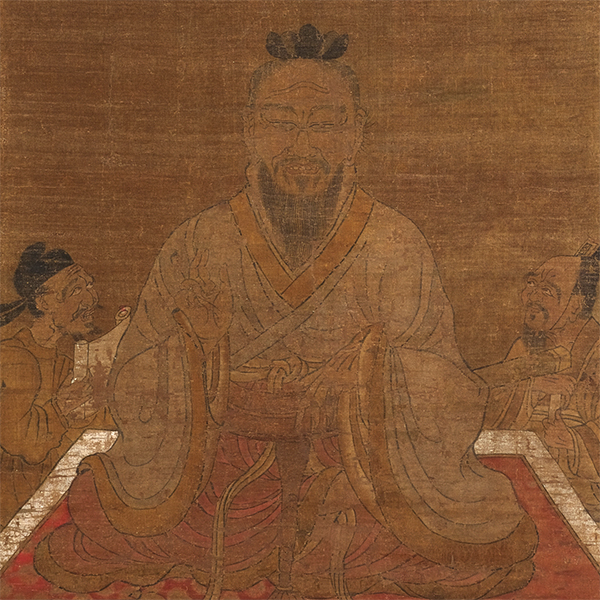The Arts of Buddhism | 8th–16th century
-

The Philosopher Confucius (detail), Kamakura period, 13th century (Important Cultural Property)
Japanese Gallery (Honkan) Room 3
October 12, 2022 (Wed) - November 20, 2022 (Sun)The beliefs and arts of Buddhism, along with its followers, became more diverse over time. In the Heian period (794–1192), the emperor and court nobility practiced and supported Buddhism. They used their vast wealth to build temples and create images for worship, often in delicate styles reflecting their tastes.
In the Kamakura period (1192–1333), the samurai gained political power, also becoming patrons of Buddhism. They preferred Buddhist art that was clear and dynamic, which led artisans to develop new styles. Many common people also became followers of Buddhism at this time, blending this religion with local beliefs, especially in the Muromachi period (1392–1573).
During these centuries, monks brought new schools of Buddhist thought from China, and developed new schools in Japan based on older teachings. Buddhism also became more integrated with Shinto, the indigenous religion. The paintings, sculptures, ritual tools, and sacred calligraphy on display illustrate this diversity in Buddhism.
| Designation | Name | Creation/ Excavation/ Provenance |
Period | Acquisition/ Ownership/ Accession Number |
CMT | ||
| Highlight | Important Cultural Property | The Deva Bishamonten | Previously kept at Nakagawa Temple, Nara | Heian period, ca. 1162 | Gift of Mr. Kawabata Ryūshi, C-1869 | ||
| Highlight | Important Cultural Property | The Philosopher Confucius | Kamakura period, 13th century | A-11967 | |||
| Highlight | The Philosopher Confucius | Muromachi period, 15th century | A-10180 | ||||
| Highlight | The Buddha Śākyamuni with Two Attendants and Ten Demonesses | Kamakura period, 14th century | Gift of Mr. Endō Hisao, A-10432 | ||||
| Highlight | The Buddhist Layman Vimalakīrti | Nanbokuchō period, 14th century | A-22 | ||||
| The Philosopher Confucius | Muromachi period, 15th century | A-7095 | |||||
| Highlight | National Treasure | The Deity Zaō Gongen | Found on Kinpusen Ridge, Nara | Heian period, 1001 | Lent by Nishiarai Daishi Sōjiji Temple, Tokyo | ||
| Highlight | Important Cultural Property | Volumes 2 and 4 of the "Golden Light Sutra" (One of the “Eyeless Sutras”) | Kamakura period, 12th century | B-3177 | |||
| Highlight | Important Cultural Property | Volume 4 of the "Golden Light Sutra" (One of the “Eyeless Sutras”) | Kamakura period, 12th century | B-2400 |
